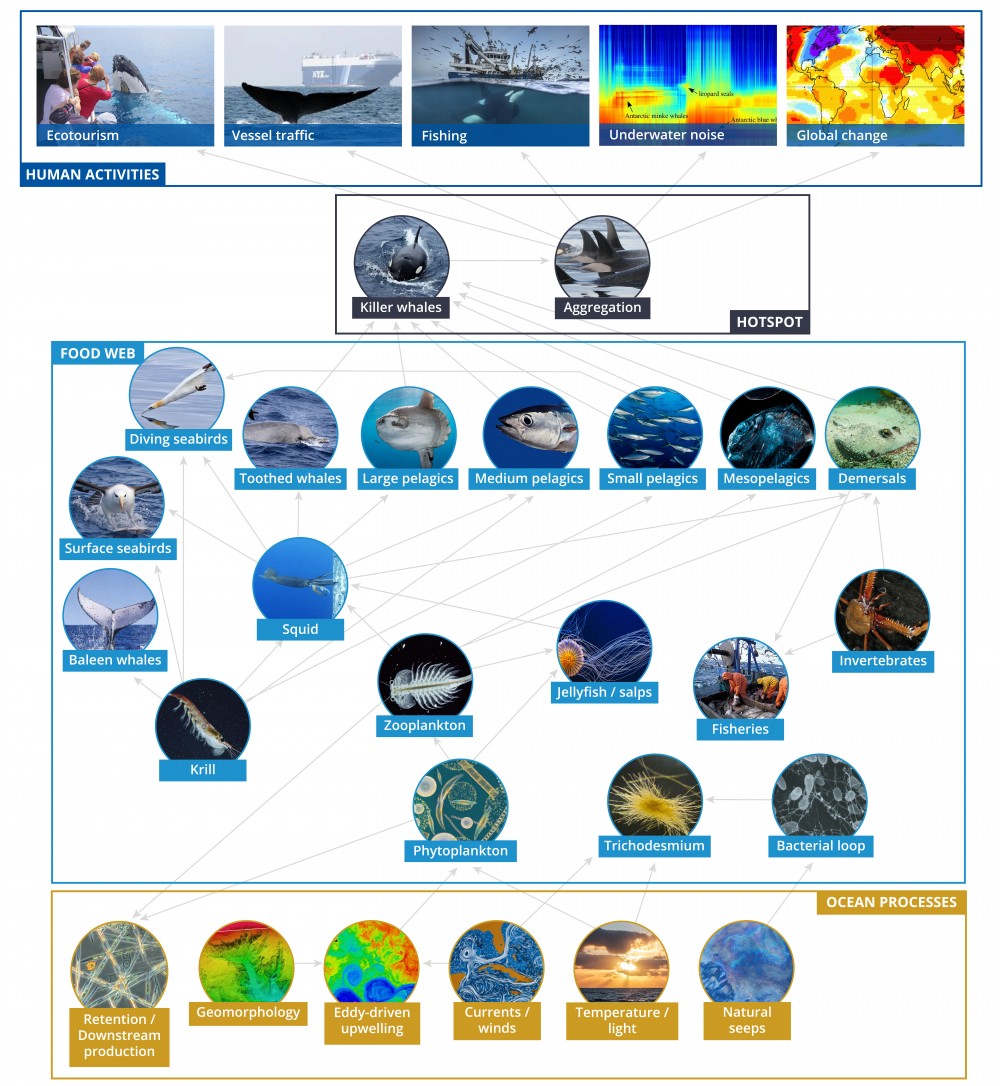Where
Who
Professor Nic Bax (NESP Marine Biodiversity Hub), Mr Peter Cochrane (NESP Marine Biodiversity Hub), Mr Jon Lloyd (Parks Australia), Ms Amanda Richley (Parks Australia), Professor Jessica Meeuwig (University of Western Australia), Dr. Phil Bouchet (University of Western Australia), Dr. Paul Thompson (University of Western Australia), Miss Sammy Andrzejaczek (University of Western Australia), Miss Jemma Turner (University of Western Australia), Professor Lynnath Beckley (Murdoch University), Miss Rebecca Wellard (Curtin University), Professor Christine Erbe (Curtin University), Mr John Totterdell (Marine Information and Research Group Australia), Mr Paul Cross (Naturaliste Charters). Funding by NESP Marine Biodiversity Hub (Emerging Priorities Program), Parks Australia.
When
October 2016 to April 2017
Why
The Bremer Marine Park and surrounds are the site of an annual aggregation of marine megafauna. Despite some media attention in recent years, the Bremer canyon has been generally little studied, and only sparse information exists on the processes likely to drive species occurrence, abundance and interactions in the area. This project was designed to generate the first regional picture of pelagic wildlife distribution patterns in the Bremer Marine Park, eliciting expert opinion on the likely structure of the pelagic food web within the Bremer ecosystem. Such knowledge not only offers a testable hypothesis that can help prioritise future research but also provides a checklist of ecological values and threats that may warrant consideration in monitoring and management.
How
As part of a NESP Project, a group of experts convened at the University of Western Australia in October 2016 and developed a conceptual ecosystem model for the Bremer region through a collaborative, participatory process. The model provides a framework for identifying links between species, emerging threats and oceanographic processes, based on the best available scientific knowledge. Biopsy samples of killer whales, sperm whales and giant squid were also collected during a 26-day vessel-based expedition undertaken as part of the research programme. These samples have the potential to yield insights into the animals’ diets and foraging behaviour.
What did we learn?
Squid was unanimously described as a key component of the ecosystem due to its role as prey for a diverse range of animals including seabirds, fishes and cetaceans. Important linkages between predator aggregations and seabed-associated organisms were also identified, as were a number of possible human disturbances, with potential to negatively impact biodiversity. The drivers of ocean productivity around the Bremer canyon remain unclear, however, with no empirical evidence for the purported importance of hydrocarbon seep-driven processes over wind-driven upwelling events.
What next?
Further research is needed to determine who eats what, when, where and in what quantity within the Bremer canyon ecosystem. Recent attempts to attach satellite tags on killer whales were thwarted by adverse weather conditions. Renewed efforts will be made to deploy these tags in 2018 to learn more about the animals’ fine-scale diving and foraging behaviour, shedding light on their diet and the range of prey they may target. Repeat aerial and vessel-based surveys at different times of the year are also critically needed to enhance our understanding of species interactions across seasons and years.
Related data and publications
Meeuwig J, Turner J. (2017) Bremer Canyon Progress Report - NESP Emerging Priorities Project EP2 (Spatial distribution of marine wildlife in the Bremer Bay region). Report prepared for the NESP Marine Biodiversity Hub, 18 p.
Meeuwig J, Turner J, Bouchet P. (2016) Bremer Canyon Science Workshop Report - NESP Emerging Priorities Project EP2. Report prepared for the NESP Marine Biodiversity Hub, 27 p. DOI: 10.13140/RG.2.2.25891.35364.
For more information please contact marinescience@environment.gov.au.


